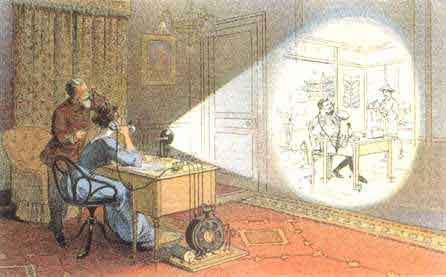E-learning Introduction :: Ageless Learner
Source http://agelesslearner.com/intros/elearning.html
Source

E-learning is the unifying term to describe the fields of online learning,
web-based training, and technology-delivered instruction.
Although
we have strong opinions about where eLearning is likely to go and how
quickly it may or may not get there, this page is dedicated to linking you
to the myriad of e-learning resources in the e-world.
- A
definition
of e-learning
Websites
focused on e-learning issues
Organizations
you might want to know about- Good
articles and magazines -
Interesting
books
e-Learning. eLearning. “e”learning. However you write it, definitions
abound.
| The convergence of the Internet and learning, or Internet-enabled learning. |
|
| The use of network technologies to create, foster, deliver, and facilitate learning, anytime and anywhere. |
|
| The delivery of individualized, comprehensive, dynamic learning content in real time, aiding the development of communities of knowledge, linking learners and practitioners with experts. |
|
| A phenomenon delivering accountability, accessibility, and opportunity to allow people and organizations to keep up with the rapid changes that define the Internet world. |
|
| A force that gives people and organizations the competitive edge to allow them to keep ahead of the rapidly changing global economy. |
With
good design and delivery, e-learning does all these things. But, at its
heart, it is, simply, learning. Too bad most interpretations focus on the
technology (the “e”) and not on the learning.
Maybe
the “e” should actually follow the word “learning.”
Want
more? E-Learners.com explains
what is
e-learning,
how does it work, and some of the terms you’ll find when you take
e-learning courses.
And more
still?
What is
e-learning?
(from HowStuffWorks.com) explains what it is and how it works.
“The effectiveness of an elearners experience is greatly
enhanced through student-centered (usability)
design. For example, students remember more information from a text book
that is well organized, with extensive visuals, reflection/interaction
points, clear headings, etc. The same concepts exist for online courseslearners
learn better through use of clear headings, limited distracters, visuals,
screen-friendly fonts, appropriate white space, web safe colors, etc.
Basically, usability is the process of testing (through observation) how
students behave with a coursewhat
works, what doesn’t, what confuses.”
elearnspace.org
Find all
sorts of terrific information on
e-learning
at Jay Cross’
Internet
Time
website. If you’re interested in e-learning, you should check out this site!
Elearners.com
address many aspects of e-learning, distance education, and taking classes
online.
The
Masie Center
website links to many aspects of e-learning.
About.com has a good collection of information on
Distance Education.
The
UK-based e-Learning Centre’s
eCLIPSE
offers e-learning information for learning professionals in higher
education, corporate training, and continuing education.
Elearnspace
is intended for users, managers, developers, and facilitators
of elearning. They have a mailing list and some very useful models.
Go to a
complete list of
education-related organizations on the learnativity.com site
E-Learning Forum.
If you live (or frequently visit) Northern California, check out this group.
This is a wonderful organization no matter where you live, but if you live
in the Silicon Valley and can attend their meetings, you are in for a real
treat.
Distance
Learning Resource Network
US
Distance Learning Association.
Designed to promote the development and application of distance learning for
education and training
Learning
in the New Economy Magazine
featured
The
Whitespace Around eLearning
in its Fall 2000 issue.
e-learning Magazine
offers a hardcopy and an online version.
ACM
publishes the online
eLearn
Magazine
ASTD’s
Learning
Circuits
covers many e-learning themes.
Article
on e-learning and Distance Ed from
Business
2.0.
E-Learning: Strategies for Delivering Knowledge in the Digital Age.
Marc J. Rosenberg. October 2000.
Managing
Web-Based Training.
Alan L. Ellis, Ellen D. Wagner, Warren R. Longmire. ASTD, 1999.
Web-Based Training Cookbook.
Brandon Hall. Paperback with CD-ROM. John Wiley & Sons, 1997. Learn more
about
Brandon.
Web-Based Training: Using Technology to Design Adult Learning Experiences.
Margaret Driscoll, Larry Alexander. Hardcover with CD-ROM. Jossey-Bass,
1998.
Building
a Web-Based Education System.
Colin McCormack, David Jones (Contributor). Paperback with CD-ROM John Wiley
& Sons, 1997
How to
Design Self-Directed and Distance Learning: A Guide for Creators of
Web-Based Training, Computer-based Training and Self-Study Materials.
Nigel Harrison
Web-Teaching: A Guide to Designing Interactive Teaching for the World Wide
Web.
David W. Brooks
Distance
Education Symposium: Course Design (Acsde Research Monograph Series, Vol 14).
Ellen D. Wagner, Margaret A. Koble (editors). American Center for the Study
of Distance Education, 1997.
“Beyond
Distance Education: Distributed Learning Systems” Ellen D. Wagner in
Handbook
of Human Performance Technology,
2nd ed., H.D. Stolovitch & E. J. Keeps (editors). 1999.
